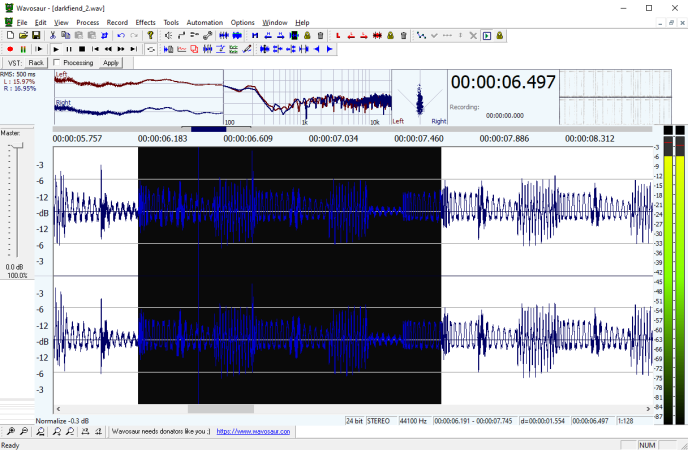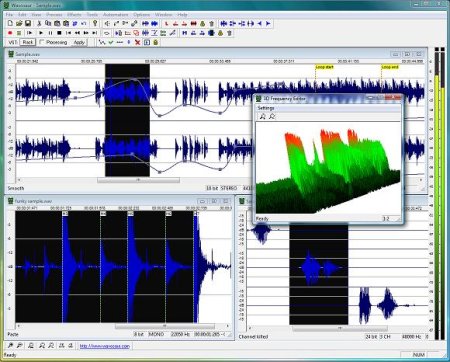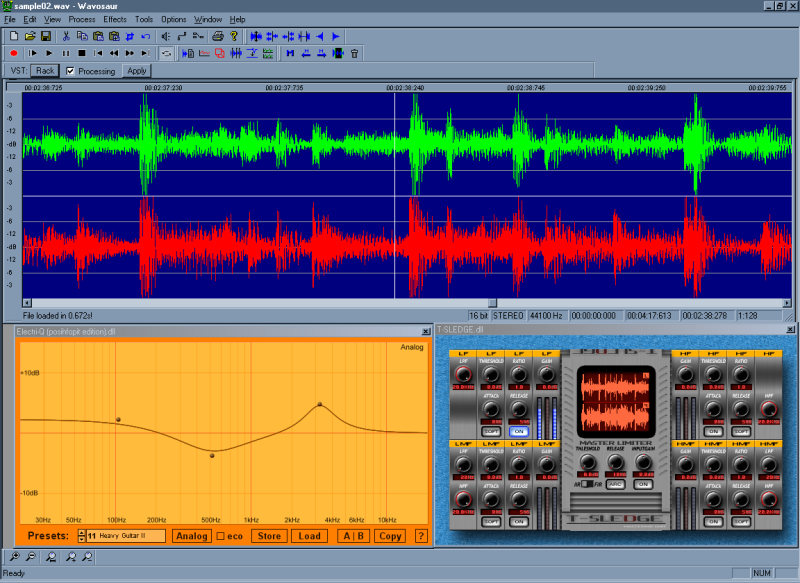

set_ylabel ( "Waveform Frequency (Hz)" ) axis. set_xlabel ( "Original Signal Frequency (Hz, log scale)" ) axis. unsqueeze ( dim = 0 ) return signal def plot_sweep ( waveform, sample_rate, title, max_sweep_rate = 48000, offset = DEFAULT_OFFSET, ): x_ticks = y_ticks = time, freq = _get_freq_ticks ( max_sweep_rate, offset, sample_rate // 2 ) freq_x = freq_y = figure, axis = plt.

I have some wave files which I recorded, I am happy with the quality, however the sample rate is slightly off - for example 48002 rather than the 48000 which I want.
Wavosaur sample rate without resampling Pc#
cumsum ( delta, dim = 0 ) signal = torch. I was able to do this sometimes with the free program 'wavosaur' but it seems very unstable on my PC - so looking for something else.

pi * freq / sample_rate cummulative = torch. append ( f_max ) return times, freq def get_sine_sweep ( sample_rate, offset = DEFAULT_OFFSET ): max_sweep_rate = sample_rate freq = _get_log_freq ( sample_rate, max_sweep_rate, offset ) delta = 2 * math. y resample (x,tx) resamples the values, x, of a signal sampled at the instants specified in vector tx. You can specify additional arguments n, beta, or b. append ( f ) t_max = _get_inverse_log_freq ( f_max, sample_rate, offset ) / sample_rate times. yTT resample (xTT,p,q, ) resamples the uniformly sampled data in the MATLAB ® timetable xTT at p / q times the original sample rate and returns a timetable yTT. log ( 1 + half / offset )) def _get_freq_ticks ( sample_rate, offset, f_max ): # Given the original sample rate used for generating the sweep, # find the x-axis value where the log-scale major frequency values fall in times, freq =, for exp in range ( 2, 5 ): for v in range ( 1, 10 ): f = v * 10 ** exp if f < sample_rate // 2 : t = _get_inverse_log_freq ( f, sample_rate, offset ) / sample_rate times. double )) - offset def _get_inverse_log_freq ( freq, sample_rate, offset ): """Find the time where the given frequency is given by _get_log_freq""" half = sample_rate // 2 return sample_rate * ( math. linspace ( start, stop, sample_rate, dtype = torch. log ( offset + max_sweep_rate // 2 ) return torch. set_option ( "display.max_columns", None ) DEFAULT_OFFSET = 201 def _get_log_freq ( sample_rate, max_sweep_rate, offset ): """Get freqs evenly spaced out in log-scale, between offset is used to avoid negative infinity `log(offset + x)`. set_option ( "display.max_rows", None ) pd. Import math import timeit import librosa import lors as mcolors import matplotlib.pyplot as plt import pandas as pd import resampy from IPython.display import Audio pd.


 0 kommentar(er)
0 kommentar(er)
